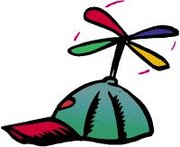Beanie
|
|
Beanie_line_drawing.png
A beanie or skully is a soft, close-fitting cap or hat, which is usually made of wool, synthetic material, or fleece. They are worn low on the head, covering the forehead, and can be pulled down over the ears as well. They can be worn by either sex, but are more commonly worn by men.
Beanies can have a turn-up, and skullies are sometimes crocheted; otherwise, the terms are interchangeable. There are two main varieties of beanies, those that hug the top of the head, and those that leave the top couple of inches of the hat unstretched on top of the head. Beanies and skullies that are worn as fashion items are often heavily branded with the name of the designer or with other logos or slogans.
These hats protect the head and ears from cold and wind chill, or are worn as a fashion item. The term beanie is used mainly in New Zealand, Australia, the United States, and the United Kingdom. Some English-speakers, especially military, refer to beanies as watch caps. They are also called woollen or wooly hats, or bobble hats if they are topped with a pompom. Canadians often refer to them as tuques. Some varieties are known as stevedore caps; they are also referred to as ski caps or, if worn over the face, as balaclavas.
A beanie is also the name for a skullcap (a tight-fitting, brimless hat) worn by schoolchildren in the early to mid-20th century. The "crown" that Jughead Jones wears in Archie Comics is a form of beanie, as is a cap often worn by Spanky of Our Gang (The Little Rascals). These were also known as "whoopee caps" and "dinks." Since then, the name "beanie" has come almost exclusively to mean a child's hat that has a plastic propeller sticking out of the crown.
Originally, the beanie was a blue-collar working hat, worn by laborers like welders or mechanics who needed to keep their hair back but for whom a brim would be an unnecessary obstruction. Some hat historians believe schoolchildren began wearing skullcaps in imitation of their working-class fathers. The baseball cap evolved from this kind of beanie, with the addition of a brim to block the sun.
The name "beanie" probably comes from the early-20th century slang term "bean," meaning "head."
External Links
- Historical Boys Clothing on the Beanie (http://histclo.hispeed.com/style/head/cap/cap-bean.html) (the article requests a password to view images, but the text is free).

